.
The Brochure Series
OF ARCHITECTURAL ILLUSTRATION.
| Vol. I. | JUNE, 1895. | No. 6. |
RENAISSANCE PANELS FROM PERUGIA.
The carved walnut panels from the choir stalls of the Church of San Pietro de' Casinense in Perugia, designed by Stefano da Bergamo in 1535, which are given as illustrations in this number, are excellent examples of the ornament of the later period of the Italian Renaissance. This form of ornament was first used in flat painted panels upon pilasters, such as the well-known work of Raphael in the Loggia of the Vatican, suggested by the Roman work discovered in his time upon the Palatine. It was afterwards applied to all sorts of objects where rectangular spaces were to be decorated. Its characteristics can hardly be better described than in the following extract from Mr. C. Howard Walker's articles upon the Study of Decoration in The Technology Architectural Review:—
"The motives on the pilasters were of two kinds: the continuous scroll, starting from a strong base leaf and rising in equal volutes, with alternating direction to right and to left, and filling the panel. This motive needed always to be balanced by its opposite, and was consequently seldom used. It had its prototype in the magnificent scroll from the Forum of Trajan. The other motive was that usually used, and capable of infinite variety, that of a central axis, the ornament diverging from it symmetrically on either side. This motive was borrowed from colored decorations on the Roman walls. It is a most difficult class of ornament to handle, as so much depends upon relative distribution, proportion, and relief of modeling. The motive usually starts at the bottom and grows continuously to the top, with the base, whether a mass of leafage, a vase, or other unit of ornament, well defined and the crowning unit strong and rich. The central axis can be actual or merely evidenced by the symmetry of the sides, preferably actual. To prevent an effect of absolute perpendicular division or of stringiness, this axis, between its base and crown, is divided either by knots of ornament, concentrated masses, or horizontal motives. In making these divisions the rules of cadence need to be carefully observed; the divisions should be made equal in length, or alternate, or in sequence, and the same method should be observed in the units of ornament marking the divisions. In most cases there is more ground than ornament, which always demands that the lines of the ornament should be most carefully studied, and that the units used as terminals for these lines should be exactly disposed, in relation to the axis, to each other, and to the border of the panel. When one considers the number of factors which can enter into the composition of one of these panels, it can be readily conceived that their variety is wellnigh infinite; absolute symmetry on either side of a central axis on which are threaded units of ornament, and which starts from a mass of detail and terminates in a mass of detail; systems of radial lines diverging from the central axis and terminating in centres of ornaments of greater or less size, arranged in all sorts of groupings; [85] garlands, pendants, and ribbons, vases, trophies, shields, birds, beasts, and nondescript combinations, foliage, conventional and natural, forms, human and superhuman, all in varying scales, all in surfaces undulating, now rising into sharp relief with clear-cut edges, now sinking and melting into the background; and the whole so carefully balanced, so exactly distributed, that no portion should be too strong for another, no detail but should be equally refined. It is not an easy matter to succeed in a design of such requirements."
"It is well into the latter part of the fifteenth century before this pilaster treatment is prevalent. The Quattrocento work contains much less of it than the Cinquecento. The garlands and trophies, lions' and bulls' heads, dolphins and griffins, tridents and shells and rosettes, and numberless familiar forms appear in a new guise; the new forms being, for the most part, heraldic motives or town arms, such as the fleur-de-lis of Florence, the Biscione or viper of Milan, and lions which are rampant, a condition unknown to their classic prototypes. Shields, though used before, have a new form, and ribbons are developed into all sorts of knots and waving ends, the loops having the same cadences in relative size as other decorative compound motives."
XLI to XLVII.
PANELS FROM THE CHOIR STALLS, CHURCH OF S. PIETRO, PERUGIA, ITALY.
The principles governing the design of these panels so well explained in the foregoing quotation can all be seen exemplified in the plates. They are all built upon a central axis, and the proportion and distribution of the various motives most carefully studied and beautifully carried out. Although all are shorter than the usual pilaster, the design is exactly similar to that usually employed for this purpose. Even the horizontal panels in plates XLVI and XLVII follow precisely the same rules of design.
XLVIII.
PANEL FROM THE CHAMBER OF COMMERCE, PERUGIA, ITALY.
This panel, although from a different building, is so similar in treatment to the ones in the Church of S. Pietro that it can be classed with them, and all that has been said of them applies as well to this.
Architectural Schools.
It is not many years since there was but one school in America to which a young man could go with the expectation of getting instruction in architecture, or at least where a special course of training was laid out for this purpose. At present there are six well-equipped architectural schools connected with as many colleges, each with its own corps of instructors and each presenting special advantages to students. In addition to these principal institutions there are a number of others in which instruction in architecture is given, either independently or in connection with other courses. To a young man intending to take up the study of architecture this array of opportunities may not appear in exactly the light of an embarrassment of riches, but it furnishes a wide field from which to choose, and it may not be an easy matter to determine which under the special circumstances connected with each case presents the greatest advantages. For this reason a general statement of the main features and practical equipment of the principal schools may be of service in enabling intending students to choose intelligently among them.
MASS. INSTITUTE OF TECHNOLOGY.
The oldest, the most thoroughly appointed, and largest architectural school in the country is the Department of Architecture at the Massachusetts Institute of Technology in Boston. It is in charge of Professor Francis W. Chandler, with a corps of ten professors, assistants, and special lecturers. The regular course consists of four years' study. Special students are admitted after satisfying the faculty by examination or otherwise that they are proficient in the preparatory studies required and are qualified to pursue to advantage the special work chosen.
The instruction in this department comprises the study of construction and materials, the study of building processes, and of professional practice, as well as that of composition and design, and of the history of architecture. It is arranged to meet the wants both of those who commence their professional studies at the beginning, and to some extent of experienced draughtsmen who desire to make[87] up deficiencies in their training, or to qualify themselves for undertaking the responsibilities of practice.
The more strictly professional work begins with the study of the five orders and their applications, and of architectural history. During each year there is regular instruction in freehand drawing, the last year being from life. There is also a special class in pen-and-ink drawing under Mr. D. A. Gregg. Instruction is given in watercolor drawing by Mr. Ross Turner. The students are familiarized with the material elements of their future work by a course in practical construction, illustrated by lectures, problems, and by visits to buildings. The subject of specifications and contracts is discussed. Problems in construction of all kinds are given, to fix in the memory the principles already learned.
For two and one-half years the students are continually engaged upon architectural design under the charge of Professor Despradelle and Mr. S. W. Mead. Each student's work is examined and criticized before the classes by a jury from the Boston Society of Architects.
The Boston Society of Architects has established two prizes of the value of fifty dollars each in books for students who at the end of the year exhibit the best work.
Several thousand photographs, prints, drawings, and casts were originally collected for the Department by means of a special fund raised for the purpose. To these collections large additions have been made, at first mostly by gifts, but later by regular appropriations. Models and illustrations of architectural detail and materials are arranged in the rooms of the department. The chief part of the collection of casts of architectural sculpture and detail belonging to the department has been deposited in the Museum of Fine Arts, together with the architectural collection belonging to the museum. The students of the Department have free access to the museum at all times; as the building is close at hand no inconvenience results from the change, and some of the advanced exercises in drawing are held there. The museum of sanitary and building appliances contains models of plumbing apparatus, specimens of metal work, tile work, glass work, and wood work, partly purchased, but mostly deposited with the Department by the manufacturers. The architectural library contains a large and carefully selected collection of technical works and the leading periodicals, both American and foreign. The resources of the Department have been much enlarged by the erection of a special building devoted entirely to its uses.
In 1894 a summer school of architecture was held in Salem and Portsmouth for the study of colonial work. The courtesy of owners of houses built at this epoch allowed the students to measure and sketch the best work of this interesting locality, and in the future it is proposed to make an exhaustive study of colonial architecture.
Both men and women are admitted to all departments of the Institute. Candidates for admission must be at least seventeen years of age, and must pass satisfactory examinations in algebra, plane geometry, either French or German, English, history, and either advanced algebra or solid geometry. A detailed account of these requirements and the general conditions of the entrance examinations, which are held the last of June and middle of September, can be found in the catalogue of the Institute, which will be sent upon application by the secretary. The tuition fee is $200.00 a year divided into two payments, $125.00 due in October and $75.00 due in January.
During a number of years a special course of two years was maintained in the school, which attracted many students who did not find it possible to spend the time required for the full course of four years. This arrangement has now been discontinued and no special provision is at present made for other than regular students.
The Institute has from the beginning modeled its instruction very largely upon that of the Ecole des Beaux-Arts, and has ranked until the last few years as the only American school in which a thorough academic training in architectural design was attempted. Its professors of design Professor E. Letang, who died in 1892, and Professor D. Despradelle, both Frenchmen, have devoted their whole time to this branch of instruction, and have maintained a standard which until recently other schools have not approached.
Although the graduates from the full four years' course are comparatively few, no other school can count so many of its former students in prominent positions in the profession, and the Institute is deservedly proud of its record in this direction.
The Brochure Series
of Architectural Illustration.
PUBLISHED MONTHLY BY
BATES & GUILD,
6 BEACON STREET, BOSTON, MASS.
| Subscription Rates per year | 50 cents, in advance. |
| Special Club Rate for five subscriptions | $2.00. |
| Entered at the Boston Post Office as Second-class Matter. | |
Until the present year no American student of architecture has ever been honored with the diploma of the Paris Ecole des Beaux-Arts, but on June 14 the degree of the school was conferred on three Americans—Messrs. J. Van Pelt, J. H. Friedlander, and D. Hale. The first diplomas were awarded in 1869, before that date there being no official recognition of the completion of any required course in the school, except the awards in the various concours, all leading up to the Grand Prize of Rome.
There are a number of Americans now in Paris who intend to present theses for the diploma, and doubtless other awards will follow those already made. Any present or former student of the school who has reached the required standard in his work is allowed to submit a thesis in competition for the diploma.
At the entrance examination of the Ecole this year sixteen American students of architecture were received. Last year there were but eight, which up to that time was the largest number recorded.
The Chicago Architectural Club has given evidence this year of very great activity, and its work has been directed in many channels and with good effect. Its lectures, classes, competitions, smokers, Bohemian nights, receptions, ladies' nights, expeditions to places of interest, and finally its exhibition of last month have all been excellently chosen to instruct, interest, and amuse its members, and incidentally promote the general cause of architectural education. The long list of attractions has held the interest of its members without flagging. In the classwork it has had the services and advice of the best and most competent men connected with the profession; and in all directions it is to be congratulated upon the good work done.
Books.
Æsthetic Principles: By Henry Rutgers Marshall, M. A. Macmillan & Co. 1895. 201 pages. $1.25.
Probably many readers of The Brochure Series have struggled as has the writer (and possibly some are still in an unsettled state of mind in consequence) over the abstruseness of the current works upon the philosophy of art, trying to find some obscure foundation on which to build for themselves a theory of æsthetics. To such, and to all others who have any wish to reason connectedly on art matters, Mr. Marshall's little book will be interesting and instructive reading. It is remarkably clear and understandable even to a reader with no special training in metaphysical reasoning, and in point of literary style and carefully considered use of language it is a genuine treat. Its object is to explain, in as direct and simple language as possible, the nature and origin of our ideas of the beautiful, and the logical deduction to be made from the premises, which will guide us in the practice of the fine arts, or the production of beauty of some special type.
As Mr. Marshall is an architect, many of his illustrative examples are drawn from architecture, and the book on this account is especially interesting to architects.
Rational Building: Being a translation of the article "Construction" in the Dictionnaire Raisonnè de l'Architecture Française of M. Eugène-Emmanuel Viollet-le-Duc. By George Martin Huss, Architect. New York: Macmillan & Co. 1895. 367 pages. Illustrated. $3.00.
This book, although confined entirely to the consideration of the French Gothic, will be found of great value to students. Many of our readers are of course familiar with it in its original form, while others may have followed the translation as it has appeared from time to time in the pages of the American Architect.
It will be mainly useful from its historical and theoretical bearing, as all that is[91] here included which is of practical value for application to modern uses can be found elsewhere in more available shape. The illustrations form a most important feature in the usefulness of the book. The remarkable diagrammatic drawings of Viollet-le-Duc are famous for their clearness and the amount of information which they convey.
The table of contents includes the following headings: Discussion of General Conditions and Principles; Roman and Romanesque Vaults; Origin of the Pointed Arch; Development of Principles; Vaults; Materials; Thirteenth Century Developments; Civil and Military Construction.
Catalogue of the Premiated Drawings of the Department of Architecture, Massachusetts Institute of Technology, 1895. Published by the Architectural Society. Forty-four illustrations.
The work of the Department of Architecture at the Massachusetts Institute of Technology is without doubt the most fully developed students' work in architecture now done in this country, and the drawings shown in this catalogue, giving a selection of the best designs from the year's work just finished, do credit alike to the system followed at the school, the fidelity of the instructors, and the earnestness and talent of the students. The premiated designs in the competitions of the Society of Beaux-Arts Architects made in the course of regular school work are reproduced in this catalogue, and also the first-mentioned designs in the regular monthly problems forming the drill in design of the school. The program for the latter is given in each case. These problems make up a graded series of considerable interest, and are worth careful study and comparison.
Building Exhibit.
The many recent developments in the building arts have rendered it practically impossible for those not directly connected with them to keep informed of the latest and most improved methods of construction, or, in fact, to easily obtain information when desired. To architects, whose business it is to be familiar with the best and most economical method of solving any building problem, it is often difficult to find the information desired, as the field is so wide and the inventions and improvements multiply so rapidly. To meet the requirements of intending builders, as well as architects, permanent exhibits of building materials have been established in several of the principal cities of the United States, where it is possible to see specimens of the actual materials, appliances, and latest inventions used in modern construction. There are such exhibits in Chicago, Philadelphia, New York, and Brooklyn; and all are proving indispensable in their special fields.
The Chicago exhibit, known as the Institute of Building Arts, located at from 63 to 69 Washington Street, is owned and managed directly by the Illinois Chapter of the American Institute of Architects, and has been controlled in this way for the past five years.
It was established for the purpose of centralizing information relating to buildings, and collecting in a permanent exhibition all materials, appliances, or inventions of a practical or ornamental character. Its advantages are: First, educational, by placing before the interested public an aggregation of building intelligence in the form of exhibits of the actual materials, appliances, and inventions employed in modern construction. Second, that in the fact of such centralization of materials, a vast amount of time is saved to the public concerned in building interests. For those who desire to build, information is not only gained regarding a large variety of improvements, but obtained in a minimum quantity of time.
The Institute of Building Arts is free to the visiting public, who are welcome to all its advantages of information and to the inspection of the numerous exhibits it contains. It furnishes gratuitously, to any one who may inquire, information relating to building improvements. It maintains a series of tests of materials, the results of which may be obtained by anyone asking for them. Courses of lectures given by skilful specialists instructive in the many sciences and arts of Architecture are given under its auspices.
The management of the Institute is strictly impartial as to the merits of the exhibits, having no financial interest in any sale. The purchaser has perfect liberty to examine the exhibits and negotiate with[93] any exhibitor. It is the duty of the management to protect each and every display from any impositions or trespasses on their several rights, and to explain to any inquirer the qualities and merits of the material or invention, as claimed by the exhibitor, but to give no individual expression of views for or against any exhibit. The examiners are to be left perfectly free to judge and accept from their own standpoint.
The important work of the Institution has made of it a central point of great interest to all connected with or interested in architecture and its kindred arts, and those who are identified with the work will not fail to be amply repaid for their interest or their labor in its upbuilding.
It became necessary a year ago to increase the floor space, and nearly one half as much more space was secured and the rooms are crowded with beautiful and instructive exhibits. The Illinois Chapter, A. I. A., has fitted up a fine library and meeting-room in the Institute, which it throws open to the interested public, who find the many pictures and books therein a great enjoyment and benefit.
The other exhibits above referred to are strictly commercial in character, and conducted in the interests of the exhibitors, and consequently may not command the prestige possessed by the Chicago Institute. Nevertheless they are important educational factors in their special localities and are a great convenience to all connected with the building trades. Every large commercial centre should be thus supplied. The success of those already established will doubtless lead to the early establishment of others. Architects and manufacturers both need only to observe the workings of any of the exhibits which we have mentioned to be convinced of their great practical value, and each individual will be enhancing his own interest while contributing to the success of all the others concerned by lending whatever assistance he can to this most praiseworthy enterprise.
Notes.
An architect cannot work to the best advantage without the best and most convenient appliances. It is true that sometimes the cleverest and most skilful draughtsmen appear least concerned about their instruments and materials, and often produce work showing wonderful dexterity and mastery of technique with the most imperfect working materials. But this is exceptional. After years of study and practice one may be able to produce with the sharpened end of a match, or with a toothpick, drawings which it would tax the skill of an ordinary draughtsman to approach with the best brushes and colors, but it is easy to see that this is no argument why the latest and most improved methods should not be employed.

Most architects still hold to the old-fashioned drawing boards supported upon trestles, and mostly from the simple inertia of custom. The improved Morse Universal Drawing Table, which is made in all sizes, with a single or double support, isconceded to be more convenient and ship-shape in all respects than the ordinary drawing board, and is only slightly more expensive in its first cost. The size which is shown in the accompanying illustration which has a board 30x36 inches, costs only $15 and is by far the cheapest and best device of its kind that we have seen. All of these tables are made to fold so as to occupy as little space as possible when not in use; will revolve or incline at any angle, and independently of the attachments below. They are built of the best materials (iron, brass, and wood) and are finely finished. The board can be made of either polished chestnut or unfinished pine if desired, and various additional attachments can be had for further convenience.
[95] Architects and draughtsmen will be surprised to find what a saving can be made in time and trouble by the use of this most essential article of furniture, as well as the remarkably low price at which it can be bought.
Many other articles of furniture which are necessary for the proper equipment of an architect's office are also manufactured by the Morse Machine Company of Rochester, such as cabinets of various descriptions, desks, special drawing boards with a steel edge (a sine qua non for the production of fine, accurate drawings), and special furniture of all descriptions. Architects will find it greatly to their profit, both in money and saving of trouble, to take advantage of the experience and facilities for manufacturing the best goods furnished by this company.
There are very few manufacturers of sanitary goods that keep up with the Dalton-Ingersoll Company in genuine improvements and novelties. Scarcely a month passes without something in the way of improvement emanating from this house; and the remarkable thing is the care and attention bestowed upon the minutest details, nothing about a sanitary fixture being considered too insignificant to command their best inventive genius. Their monthly announcement preceding our frontispiece is worth watching.
The palatial Jefferson Hotel at Richmond, Va., of which Carrère & Hastings are the architects, is built of a very fine white clay brick manufactured by the Powhatan Clay Manufacturing Company of Richmond. The strong point of this particular brick is that it is made of a natural white clay, and is not subject to the discoloration of some bricks made by artificially whitening the clay.
The great success of the "Giant" Metal Sash Chain made by the Smith & Egge Manufacturing Company, has of course led to imitation and infringement of their patented methods of manufacture. Nothing is saved by specifying "cheaper" goods, for there really are no cheaper goods than the best; and when heavy sashes are to be hung "Giant" metal chain is the proper specification.
The expense of getting up a working model, bronze finish sash lock mounted on a base, for a paper weight, and sending this free to any architect who desires one would deter most manufacturers from taking this method of advertising. But the Ives Lock is such "a good thing" that it well repays "pushing." The model works so perfectly and is so simple and durable in construction that its introduction to architects throughout the country, occupying a prominent place on their desks, is securing the almost universal specification of the lock. Architects who haven't one of these paper weights will be well repaid for asking Hobart B. Ives & Co. of New Haven, Conn., to send them one. In this connection let us add that this lock secured the medal and highest award at the Columbian Exposition.
Personal.
Among the Americans who will return from abroad this summer are: Mr. Walter H. Kilham, the holder of the Rotch Scholarship, who has now been abroad two years; Mr. F. E. Perkins, who has been abroad three years; and Mr. W. Atherton,—all of Boston. Messrs. D. Hale, W. W. Knowles, G. O. Totten, Laflin, and Ramond, of New York, and Mr. A. D. Koch, of Milwaukee, also return this summer.
Mr. J. Greenleaf Thorp announces his removal to the Constable Building, 111 Fifth Avenue, New York.
In bringing the affairs of the Architect Department of the city of Boston to a final settlement pending its abolishment on July 1, Mr. Edw. H. Hoyt has been acting as City Architect Wheelwright's assistant, in place of Mr. Matthew Sullivan, now abroad, who has most acceptably filled that position during the whole of Mr. Wheelwright's term of office. In future the work of the city will be distributed among private architects.
Mr. Frank E. Wallis has gone into partnership with Frank E. Freeman, and opened an office on West Twentieth Street, New York City.
Mr. Harold Magonigle, the Rotch scholar who has now been abroad a year, has during the last few months been doing important work in the way of measuring and drawing Roman and Renaissance monuments in and near Rome. Some of his later drawings will presently be published in The Architectural Review.
Notice to Advertisers
The letter below was written
after a three months'
trial advertisement
Rochester, N. Y., July 27, 1895.
BATES & GUILD,
6 Beacon Street, Boston, Mass.
Dear Sirs: Yours of the 26th received. In reply will say that we desire our advertisement to continue in the Brochure Series, and will state that this advertisement has given us better returns than any other we are carrying. We think that a magazine similar to yours is very much better than a trade journal, because the Brochure Series will be preserved, and will therefore be permanent.
We were tempted recently to put an advertisement in the Architectural Review on account of the good results received from the Brochure Series. Please send us the bill for our account for the first quarter, so that we can have it audited and send you a check.
Very truly yours,
Dic. W. F. M. MORSE MACHINE CO.
The advertisement which
brought these results
is on page XV
It costs $72.00 a year
Hellenica World - Scientific Library

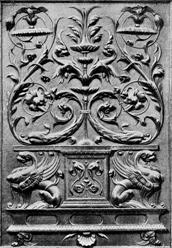 XLI. Panel from the Choir Stalls, Church of S. Pietro, Perugia, Italy.
XLI. Panel from the Choir Stalls, Church of S. Pietro, Perugia, Italy. 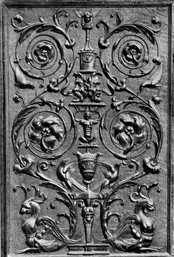 XLII. Panel from the Choir Stalls, Church of S. Pietro, Perugia, Italy.
XLII. Panel from the Choir Stalls, Church of S. Pietro, Perugia, Italy. 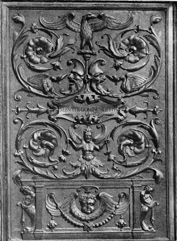 XLIII. Panel from the Choir Stalls, Church of S. Pietro, Perugia, Italy.
XLIII. Panel from the Choir Stalls, Church of S. Pietro, Perugia, Italy. 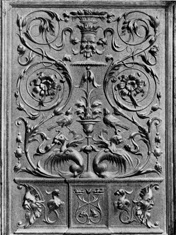 XLIV. Panel from the Choir Stalls, Church of S. Pietro, Perugia, Italy.
XLIV. Panel from the Choir Stalls, Church of S. Pietro, Perugia, Italy. 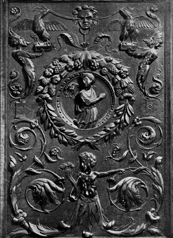 XLV. Panel from the Choir Stalls, Church of S. Pietro, Perugia, Italy.
XLV. Panel from the Choir Stalls, Church of S. Pietro, Perugia, Italy. 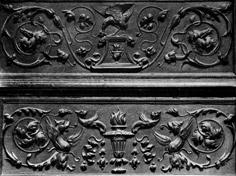 XLVI. Panels from the Choir Stalls, Church of S. Pietro, Perugia, Italy.
XLVI. Panels from the Choir Stalls, Church of S. Pietro, Perugia, Italy. 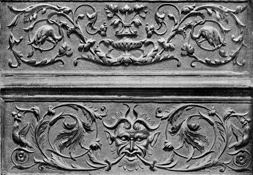 XLVII. Panels from the Choir Stalls, Church of S. Pietro, Perugia, Italy.
XLVII. Panels from the Choir Stalls, Church of S. Pietro, Perugia, Italy. 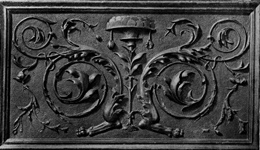 XLVIII. Panel from the Chamber of Commerce, Perugia, Italy.
XLVIII. Panel from the Chamber of Commerce, Perugia, Italy. 